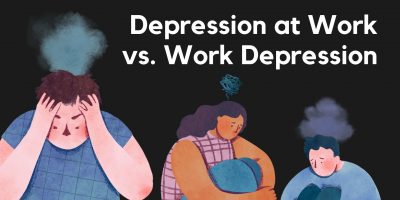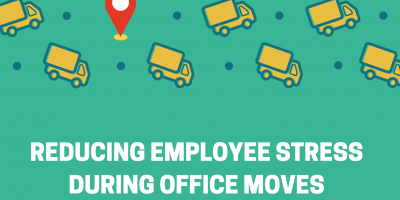
The Importance of a Healthy Work-Life Balance
Understand the significance of maintaining a healthy work-life balance for overall well-being and long-term professional success.


Digital Marketing Manager of Explainerd

Co-Founder of Milkwhale

CEO & Founder of Breadnbeyond
By nature, humans are a hyper-social species.
All humans across time and every culture live together in family groups, romantic relationships, neighborhoods, and communities – meaning we rely on cooperation to survive and thrive.
Moreover, we need to feel a sense of belonging and social support – whether that comes from friends, family, or coworkers.
At a time when remote working and flexible work arrangements are becoming the norm – there is a considerable need for dispersed employees to feel connected, engaged, and supported.
Hence, employers’ roles have expanded beyond providing employment, and they are now expected to be sources of financial, physical, emotional, and social support.
But just how important is building relationships and social wellbeing to our health? Do social connections translate to a more satisfying and productive work experience?

Undeniably, the pandemic greatly affected many aspects of our mental and physical health. However, one aspect that is not talked about enough is the impact these events had on our social wellness.
To start, what is social wellbeing?
Social wellness refers to how we interact with others and develop and sustain meaningful relationships. In the workplace context, the connection employees have to their coworkers, leaders, and enterprise – comprises employee social wellness.
Digital Marketing Manager of Explainerd, Natasha Rei, believes social well-being directly impacts employees’ relationships with their work. Rei further explains, “It can affect how they feel about their job, how engaged they are with their work, and how motivated they are to perform their best.
A positive social environment can increase job satisfaction and commitment, while a negative social environment can cause employees to feel disengaged and unmotivated.”
On top of that, research showed that employees who felt supported by their employers during the COVID-19 pandemic are more likely to say their employer cares for them. Moreover, employees who felt supported became more energized at work and more likely to remain loyal to their organization.
Now that the world is returning to normal, employers who failed to provide the right levels of support must rebuild a workforce that is less committed or enthusiastic about their organization.
In other words, when employees feel a sense of belonging in the organization, it results in greater job satisfaction and on-the-job effort.
We all strive to feel accepted and supported as members of our communities, society, and workplaces. Support from others is one of the best “antidotes” when difficult times fall upon us. Considering we spend one-third of our lives at work, the interactions and conversations we have with colleagues can significantly influence the quality of our lives and our enthusiasm for our job.
However, many would argue that friendship doesn’t belong in the office. How often have you heard the phrase, “I’m here to work, not to make friends”?
“Social wellbeing in the workplace is usually viewed as a luxury,” comments Ebnu Sudarso, Co-Founder of Milkwhale. Sudarso adds, “However, it shouldn’t be something that’s nice to have, but something every company should mandate.
Social well-being benefits workplaces and employees in the long run because it gives people a sense of belonging. When employees feel like they belong somewhere, you can expect them to go the extra mile, have better productivity, and engagement overall.”
While it’s essential to be professional in the workplace, research finds that it’s actually better to have a couple of “work buddies.” As much as 57% of employees say having a best friend in the workplace makes work more enjoyable, 22% feel more productive around friends, and 21% say friendships make them more creative.
As Ebnu Sudarso outlines, “Without social wellbeing, a workplace can feel empty, and employees won’t have a purpose or any goals to work towards. So, social wellbeing is a vital for workplaces if businesses want to further their accomplishments, maintain employees, and create a mindful working environment. “
Unfortunately, for many employees, work can be a very lonely place.

You might wonder how social wellness affects our mental and physical health. Surely, fitness and nutrition play a bigger role in our overall well-being? Well, the answer might surprise you.
Do you know that loneliness and social isolation can be as bad for your health as smoking 15 cigarettes daily?
A lack of a positive social network can be highly detrimental to our health with some dramatic consequences. It might be tempting to treat loneliness as an individual phenomenon. But data shows us that a third of adults worldwide experience loneliness. People with few social ties have the following health issues due to poor social health:
In addition, other findings show that there is a link between social relationships and health outcomes with short and long-term effects on health. Relationships with others serve as a buffer during hard times, which decreases stress levels and improves cardiovascular functioning.
To sum up, social relationships significantly impact mental and physical health, and surrounding with a positive social network will result in positive social health.

Contrary to popular belief, wellness is not merely the absence of illness and disease. Today, the concept of well-being has expanded and comprises many interdependent dimensions: physical, emotional, occupational, financial, intellectual, environmental, and social.
Physical wellness involves balancing all aspects of our physical self, such as sleep, nutrition, hygiene, movement, relaxation, and management of illnesses and injuries. Maintaining physical health revolves around staying healthy and fit through positive lifestyle choices and avoiding developing bad and unhealthy habits like the usage of drugs and alcohol.
We are more open and welcoming to new experiences, people, and ideas when physically well. Conversely, when our physical well-being is low, we are less willing to socialize and become more absorbed in ourselves, inadvertently causing our social wellness to suffer.
Emotional and psychological well-being involves identifying, understanding, and accepting emotions. By constructively managing our feelings, we gain the ability to remain in the present and effectively handle any challenges.
Emotional well-being is related to social well-being because we can better develop and sustain relationships with others when we can regulate our emotions.
Workplace well-being encompasses being satisfied with work and working on achieving professional goals in a work environment that is supportive, enriching, and stimulating.
Workplace well-being, in many ways, is connected to our economic well-being since it includes elements like proper compensation for our efforts and realizing our full potential. In addition, many social relationships form and develop in the workplace, contributing to overall social wellness.
Social wellbeing involves balancing all aspects of social well being – feeling connected to a broader social environment and making a meaningful impact on the people and world around us.
When we experience a social threat – a breakup, a death, or a hit to our reputation – we rely on the safety nets we have built to face these hardships. Forming bonds and relationships with others improves the quality of our lives and strengthens our communities.
The process of personal development and growth is centered around transforming parts of our life to make significant improvements. Personal growth is much larger than career advancements – it encompasses all aspects where we want to see progress.
Social connectedness and forming meaningful relationships are also integral parts of any personal development journey – revolving around developing communication skills, problem-solving, conflict management, and relationship-building.
If you think that many acquaintances or followers across online platforms indicate that you’re socially healthy, think again. Listed below are some social well being examples and signs that show a person is socially healthy:

An individual’s experiences at work, be it emotional or social, noticeably affect the person while working. Moreover, these positive or negative experiences “spill over” and affect other domains like engagement or motivation. Therefore, the C-suite has increasingly recognized the real value of improving the employee experience in achieving overall business objectives.
But, creating a more connected workplace doesn’t necessarily mean making people feel like one big happy family. In fact, nurturing a positive work environment does not come through toxic positivity but through making real connections about people’s ideas, perspectives, and values.
Andre Oentoro, CEO & Founder of Breadnbeyond, explains

Amidst the “Great Reshuffle,” providing the benefits to support overall well-being is integral to attracting and retaining talent. As much as 41% of employees report poor mental health in the workplace when they experience exclusion, like being left out of social gatherings. Mental health programs and social well-being benefits are vital to connecting employees – 42% of employees highly value employer-based solutions to continue supporting social engagement, and 46% would appreciate virtual support groups for those feeling isolated or lonely.
In the last decade, research on well-being has grown exponentially. Today, many academic papers report on employment, income, and other factors that potentially influence wellness. These findings all attempt to unlock the answer to one of life’s most compelling questions: What is the secret to “happiness”?
While many factors influence psychological and mental well-being, high-quality social relationships emerge time and again as crucially important. However, although many indicators measure and track good living conditions, such as housing, health, and employment, measuring the quality of the relationships is more intricate and subjective.
There are several well-known self-measurements of social wellbeing. The European Social Survey (ESS) Wellbeing Module – assesses social wellness in terms of:
What is the recipe for workplace well-being, sometimes referred to as “happiness at work”? Measuring wellbeing at work gives you insights into the effectiveness of your wellness programs, the state of employees’ wellbeing, and identifying any negative trends. Some key metrics to track are:
Simply being aware of social wellbeing’s effect on your overall wellness is an excellent first step to improvement. Such as physical health, making choices and taking deliberate actions are needed to enhance our well-being. Here are some tips on how to improve social wellbeing:
The quality of our daily interactions and long-term relationships don’t only determine how happy we are but also how healthy we are. Social connectivity is known to benefit health in a crucial way that exceeds the benefits of other public health factors like exercise, avoiding obesity, and not smoking.
On the other hand, negative or a lack of social relationships is the source of many societal ills.
One of the main events that highlighted the importance of social well-being to individuals and public health happened during the pandemic.
Social distancing measures meant there were constraints on people’s ability to go to work, seek support from loved ones, and engage in their communities.
Loneliness and isolation, especially during rough times, take a huge toll on our mental and physical health.
These stressors triggered a massive global increase in depression and anxiety in 25% of the population – putting a significant burden on the healthcare system.
Although there is a lot of research on the positive and negative effects of social connections, there is no universal framework on how to intervene, improve, or support such relationships. Well-being and social wellness must be a primary concern for leaders, employers, and policymakers.
Creating socially cohesive environments and finding other ways to promote social health and foster good relationships ultimately benefits everyone.

At some point in our lives, we have all felt the great importance of having quality relationships with others. Employers need to understand how these social ties and interconnectedness can also create a company culture that enables growth and progress in the workplace. As Andre Oentoro puts it succinctly, “Social wellbeing plays such a crucial role in the workplace and is essential for business success.”
Browse our curated list of vendors to find the best solution for your needs.
Subscribe to our newsletter for the latest trends, expert tips, and workplace insights!

Understand the significance of maintaining a healthy work-life balance for overall well-being and long-term professional success.

Is there still a long way to go in fostering a culture of empathy where depression at work and work depression are viewed and treated with the same respect and urgency as any other health issue?

HR managers have a unique opportunity to make employees’ lives easier during a stressful office move.

The critical part of addressing toxic positivity in the workplace is recognizing it exists. What signs should you look for, and how do you deal with toxic positivity at work before it becomes deeply rooted in your company culture?
Used by most of the top employee benefits consultants in the US, Shortlister is where you can find, research and select HR and benefits vendors for your clients.
Shortlister helps you reach your ideal prospects. Claim your free account to control your message and receive employer, consultant and health plan leads.